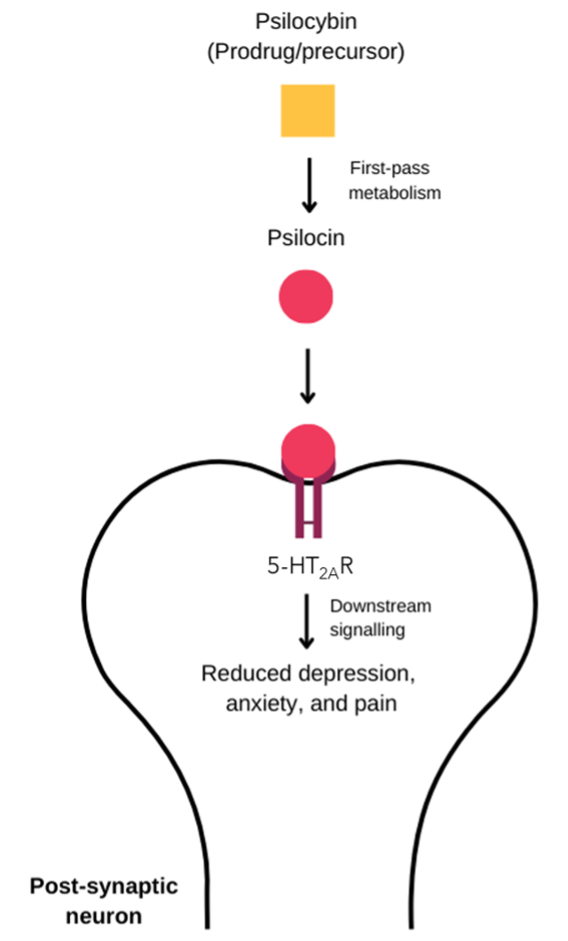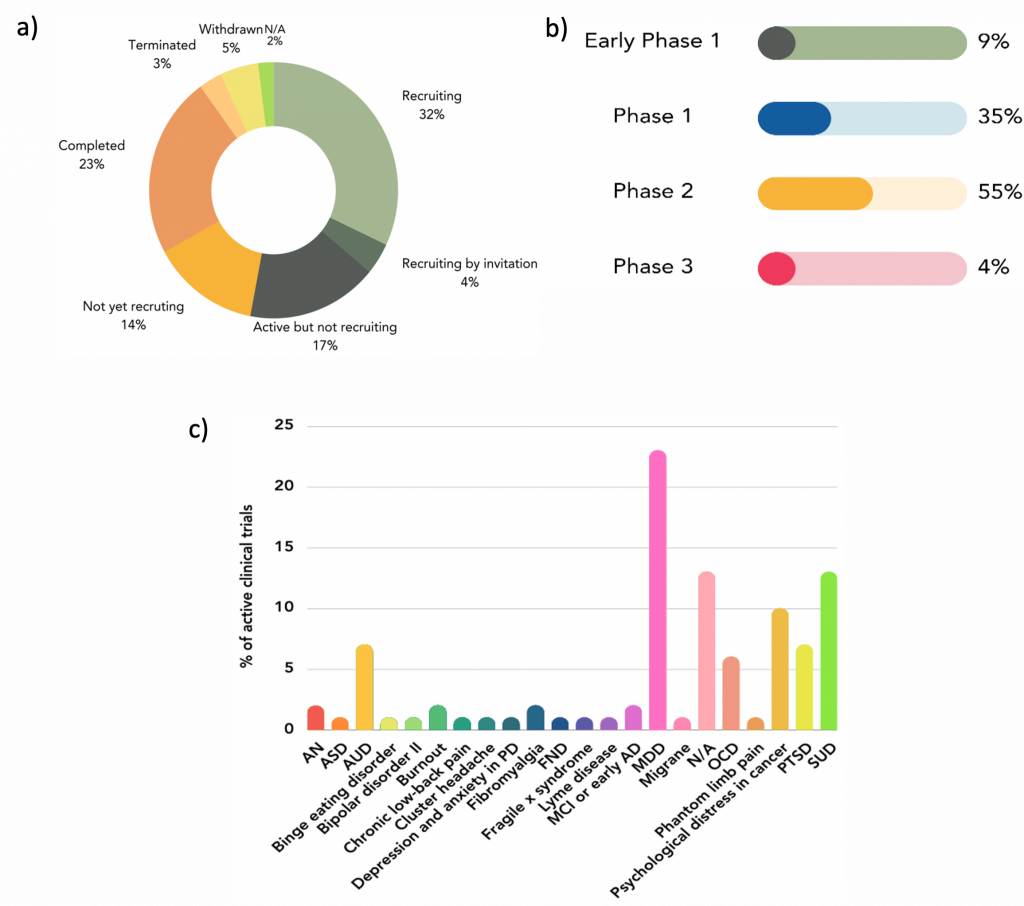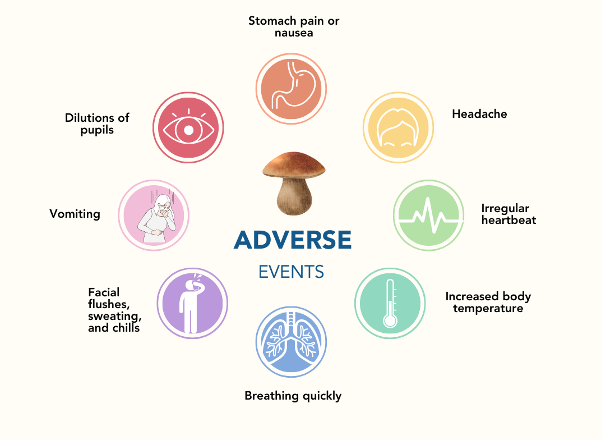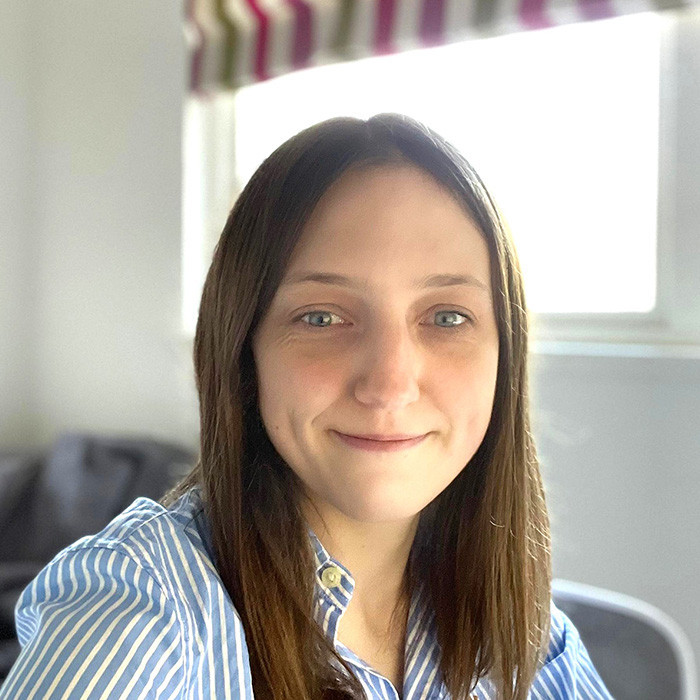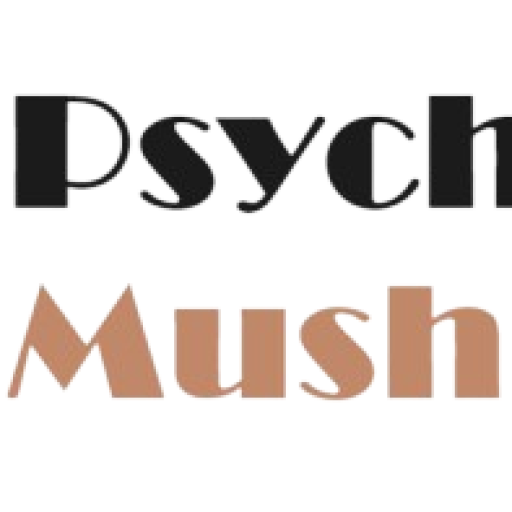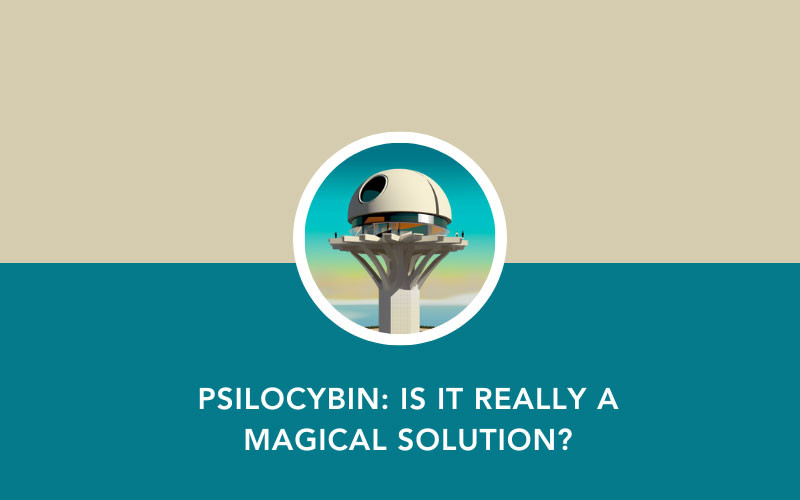1. Sharma P, Nguyen QA, Matthews SJ, et al. Psilocybin history, action and reaction: A narrative clinical review. J Psychopharmacol. 2023;37(9):849c865.
2. Ziff S, Stern B, Lewis G, Majeed M, Gorantla VR. Analysis of Psilocybin-Assisted Therapy in Medicine: A Narrative Review. Cureus. 14(2):e21944.
3. Lowe H, Toyang N, Steele B, et al. The Therapeutic Potential of Psilocybin. Molecules. 2021;26(10):2948.
4. Nkadimeng SM, Steinmann CML, Eloff JN. Effects and safety of Psilocybe cubensis and Panaeolus cyanescens magic mushroom extracts on endothelin-1-induced hypertrophy and cell injury in cardiomyocytes. Sci Rep. 2020;10(1):22314.
5. Kraehenmann R, Preller KH, Scheidegger M, et al. Psilocybin-Induced Decrease in Amygdala Reactivity Correlates with Enhanced Positive Mood in Healthy Volunteers. Biol Psychiatry. 2015;78(8):572–581.
6. Carhart-Harris RL, Leech R, Williams TM, et al. Implications for psychedelic-assisted psychotherapy: functional magnetic resonance imaging study with psilocybin. Br J Psychiatry. 2012;200(3):238–244.
7. Ley L, Holze F, Arikci D, et al. Comparative acute effects of mescaline, lysergic acid diethylamide, and psilocybin in a randomized, double-blind, placebo-controlled cross-over study in healthy participants. Neuropsychopharmacology. 2023;48(11):1659–1667.
8. Gukasyan N, Davis AK, Barrett FS, et al. Efficacy and safety of psilocybin-assisted treatment for major depressive disorder: Prospective 12-month follow-up. J Psychopharmacol. 2022;36(2):151–158.
9. Griffiths RR, Johnson MW, Carducci MA, et al. Psilocybin produces substantial and sustained decreases in depression and anxiety in patients with life-threatening cancer: A randomized double-blind trial. Journal of psychopharmacology (Oxford, England). 2016;30(12).
10. Calder AE, Hasler G. Towards an understanding of psychedelic-induced neuroplasticity. Neuropsychopharmacol. 2023;48(1):104–112.
11. Arias D, Saxena S, Verguet S. Quantifying the global burden of mental disorders and their economic value. eClinicalMedicine. 2022;54.
12. Berghöfer A, Martin L, Hense S, Weinmann S, Roll S. Quality of life in patients with severe mental illness: a cross-sectional survey in an integrated outpatient health care model. Qual Life Res. 2020;29(8):2073–2087.
13. Chellappa SL, Aeschbach D. Sleep and anxiety: From mechanisms to interventions. Sleep Med Rev. 2022;61:101583.
14. Nutt D, Wilson S, Paterson L. Sleep disorders as core symptoms of depression. Dialogues Clin Neurosci. 2008;10(3):329336.
15. Vogt D, Smith BN, Fox AB, Amoroso T, Taverna E, Schnurr PP. Consequences of PTSD for the work and family quality of life of female and male U.S. Afghanistan and Iraq War veterans. Soc Psychiatry Psychiatr Epidemiol. 2017;52(3):341352.
16. Gabriel FC, Stein AT, Melo D de O, et al. Guidelines’ recommendations for the treatment-resistant depression: A systematic review of their quality. PLOS ONE. 2023;18(2):e0281501.
17. Al-Harbi KS. Treatment-resistant depression: therapeutic trends, challenges, and future directions. Patient Prefer Adherence. 2012;6:369–388.
18. Ansara ED. Management of treatment-resistant generalized anxiety disorder. Ment Health Clin. 2020;10(6):326–334.
19. Dore J, Turnipseed B, Dwyer S, et al. Ketamine Assisted Psychotherapy (KAP): Patient Demographics, Clinical Data and Outcomes in Three Large Practices Administering Ketamine with Psychotherapy. Journal of Psychoactive Drugs. 2019;51(2):189–198.
20. Haridy R. Australia to prescribe MDMA and psilocybin for PTSD and depression in world first. Nature. 2023;619(7969):227–228.
21. ClinicalTrials.gov. Psilocybin Search Results. Available at: https://clinicaltrials.gov/search?intr=Psilocybin. Accessed: 11/10/23.
22. Carhart-Harris R, Giribaldi B, Watts R, et al. Trial of Psilocybin versus Escitalopram for Depression. N Engl J Med. 2021;384(15):1402–1411.
23. Rachel Schraer. Psilocybin: Magic mushroom compound ‘promising’ for depression. Available at: https://www.bbc.co.uk/news/health-56745139. Accessed:12/10/23.
24. RTECS. Registry of Toxic Effects of Chemical Substances (RTECS). Comprehensive Guide to the RTECS. U.S. Department of Health and Human Services, Public Health Service, Centers for Disease Control and Prevention, National Institute for Occupational Safety and Health; 1997.
25. Davis AK, Barrett FS, May DG, et al. Effects of Psilocybin-Assisted Therapy on Major Depressive Disorder: A Randomized Clinical Trial. JAMA Psychiatry. 2021;78(5):481–489.
26. Sarparast A, Thomas K, Malcolm B, Stauffer CS. Drug-drug interactions between psychiatric medications and MDMA or psilocybin: a systematic review. Psychopharmacology (Berl). 2022;239(6):1945–1976.
27. Strassman R. Human hallucinogen interactions with drugs affecting serotonergic neurotransmission.
28. Becker AM, Holze F, Grandinetti T, et al. Acute Effects of Psilocybin After Escitalopram or Placebo Pretreatment in a Randomized, Double‐Blind, Placebo‐Controlled, Crossover Study in Healthy Subjects. Clin Pharmacol Ther. 2022;111(4):886895.
29. Nutt D. Psychedelic drugs—a new era in psychiatry? Dialogues 2019;21(2):139–147.
30. Mandal S, Sinha VK, Goyal N. Efficacy of ketamine therapy in the treatment of depression. Indian J Psychiatry. 2019;61(5):480–485.
31. Shiroma PR, Thuras P, Wels J, et al. A randomized, double-blind, active placebo-controlled study of efficacy, safety, and durability of repeated vs single subanesthetic ketamine for treatment-resistant depression. Transl Psychiatry. 2020;10(1):1-9.
32. Smith-Apeldoorn SY, Veraart JK, Spijker J, Kamphuis J, Schoevers RA. Maintenance ketamine treatment for depression: a systematic review of efficacy, safety, and tolerability. Lancet Psychiatry. 2022;9(11):907–921.
33. Kargbo RB. Pioneering Changes in Psychiatry: Biomarkers, Psychedelics, and AI. ACS Med Chem Lett. 2023;14(9):1134–1137.
